I was very excited to receive a few advance Tom Bihn items and wanted to get a few photos and thoughts about them up in the hopes that it might help others who are looking at these bags and fabrics. I have been a fan of the Tom Bihn company for years. I like the way they treat their employees, the planet, and their customers. I love that their factory is located in the United States. And I really love their aesthetic!
The first bag I want to take a look at is their new Shadow Guide 23. This bag is from their Design Lab, which is a way they can manufacture small runs of products to see how well they are received. The current version (#2) is updated from the first one, a limited edition released a few years back. I bought that first iteration for my son, who still loves it. He took it to London as his one suitcase and was impressed at how well it worked for him. I asked him to share his bag with me so that I can shoot some comparison photos. The version I got is 23 liters, which is smaller than the original. I believe the first iteration has a 33 liter capacity, but I can’t say for sure.
Additionally I captured a few photos of it compared to my beloved and much used Smart Alec. My Smart Alec has the upper and lower modular pocket, and I kept them on for the photo comparisons. Without further ado, let me show you some photos:

To begin with, I loaded it up with all of my work items. I teach a high school English class once a week and need to carry all of my work materials with me each time. This bag holds it all quite nicely.
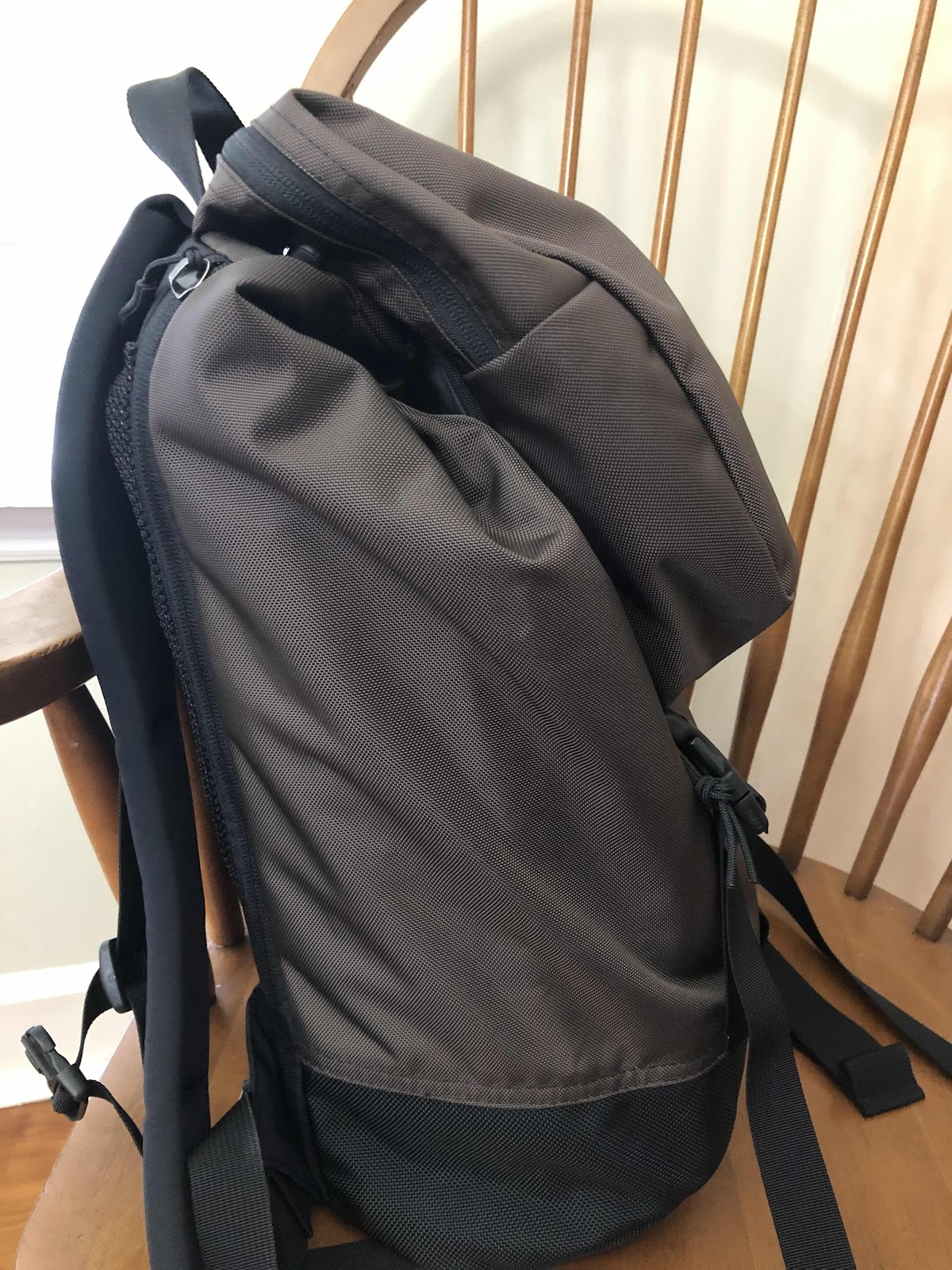
Side view of it filled up.

Now for what’s inside each section. The bag is quite simple. It’s got a capacious center “hole” and a nifty overlay pocket that serves dual purpose of providing quick access for smaller items and protecting the bottom section from any moisture. In this pocket I placed three items: my Bihn v. 6 mask (more about that later), my small Snake Charmer containing my electronic cords, and my Nock Brasstown pen roll.
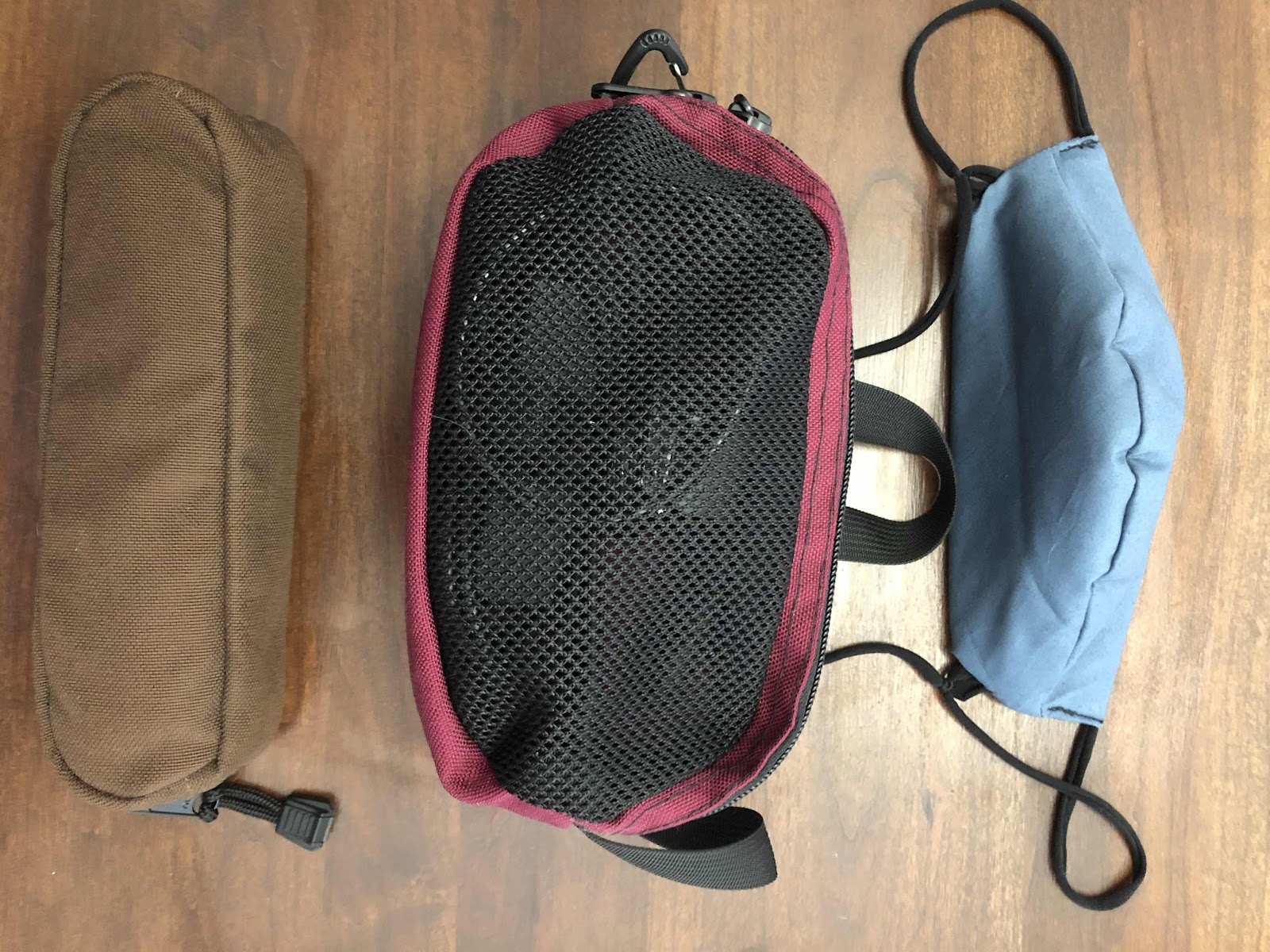
Here are the items more visibly displayed.

In the quick access flat zipper pocket on the underside of the larger overlay pocket, I placed a few pens. There are two such pockets, and in the other I would place my phone.
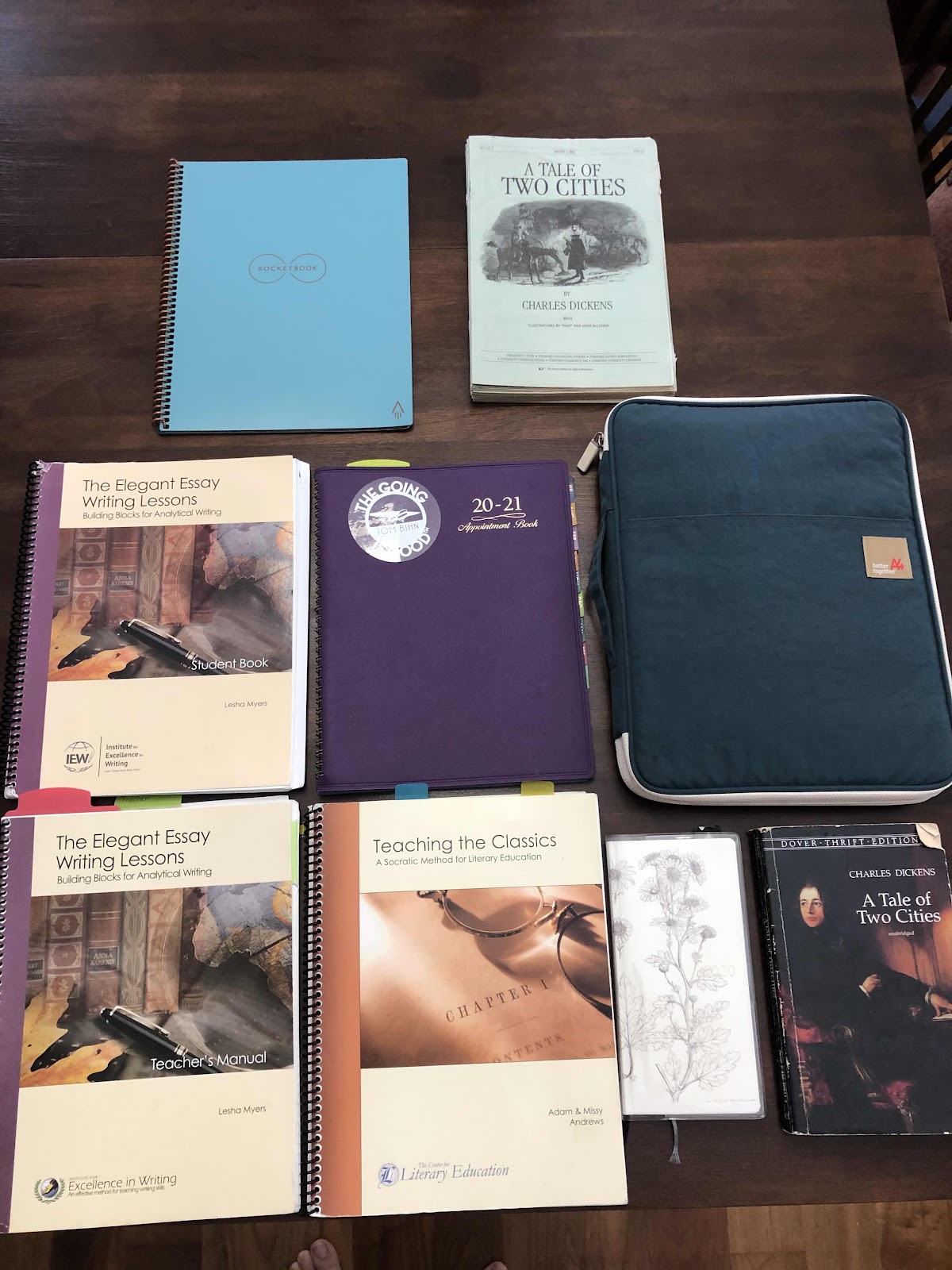
Now for the main contents. This is everything I placed in the bag. The A4 zipper pouch includes all of my papers to return as well as papers to hand out for upcoming assignments. As such, it’s quite thick. I’m finishing up teaching A Tale of Two Cities, so in addition to the novel, I’ve got the facsimile copies of how it was originally published in the Strand Magazine. These are years old, and I got them thanks to a program done by Stanford University back in 2004. Object lessons are so handy, and I wish the university would have continued the program, but alas, everything is available now in electronic format, which is ever so much more affordable and accessible.

Due to the current health crisis, I also stream my class to any student who may not be able to attend. For that purpose I’m hauling my old, larger laptop, which I am happy to say fits just fine in the handy laptop pocket at the bag of the bag. The original bag did not feature this, and my son is quite jealous (but he still prefers his red straps, so there is that).

Speaking of the first limited edition bag, I managed to capture a few photos of the bags side by side. Ignore the toes. The most obvious difference is the upper pocket. The earlier edition’s zippers are oriented differently. The zipper to the larger pocket is on the underside of the bag versus the current, topside orientation. Also, the earlier bag featured two zipper mesh pockets that are oriented horizontally versus the vertical orientation of the fabric zippers. I like the current orientation much more. It makes items more accessible without needing to unclasp the bag.

Here is a nice, side-by-side comparison. I really love how understated the brown is. In this blog post it photographs much lighter than it actually is. Ursa is a nice, dark chocolatey brown in real life.

Another big difference is the back side of the bag. The newer iteration has the unique back paneling that allows for a more breathable carry experience and it has the more comfortable, edgeless shoulder straps.
But how does it carry in actuality? To really look at that, I compared it to my Smart Alec, which I have had for several years and still use for longer hiking trips and the occasional air travel.

At first glance they appear similar in carry capacity, especially when one accounts for the modular pockets on the Smart Alec. Without the modular pockets, the Smart Alec came in at 26 liters, three more liters than the Shadow Guide.

Even though the Smart Alec carries more, it doesn’t have the same feel as the Shadow Guide. That being said, I really like both bags and especially love the cheery Wasabi interior of the Smart Alec. It also offers more organization, which can be good or bad, depending upon your preferences.

I loaded up the top modular pocket with the Snake Charmer, which just fit about perfectly.

In the lower Modular Pocket I placed the pen roll and the mask. I didn’t put anything in the side pockets.

In the main pocket I slipped my laptop (no sleeve) and the large items.
It easily handled it all, but the larger interior of the bag felt a bit more squeezed than the Shadow guide. Of course I hadn’t fully loaded it out. There was still a great deal of room in the lower modular pocket and nothing in the mesh or side pockets at all. And there was still plenty of space to pack more items on top of the books had I needed/wanted to.

Taking a look inside at the room left in the Shadow Guide, though, makes it clear that it wasn’t to its full carry capacity, either.
But all of those books and electronics make for a heavy bag, at least for me. And there was a definite winner in the carry capacity.

Here is the Smart Alec with all I’ve loaded into it.

And here’s a photo taken from the side. While I could carry it, it wasn’t comfortable. I wouldn’t have wanted to run through an airport with it on my back, that’s for sure!

Here’s a photo of the Shadow Guide 23 carrying the same load.
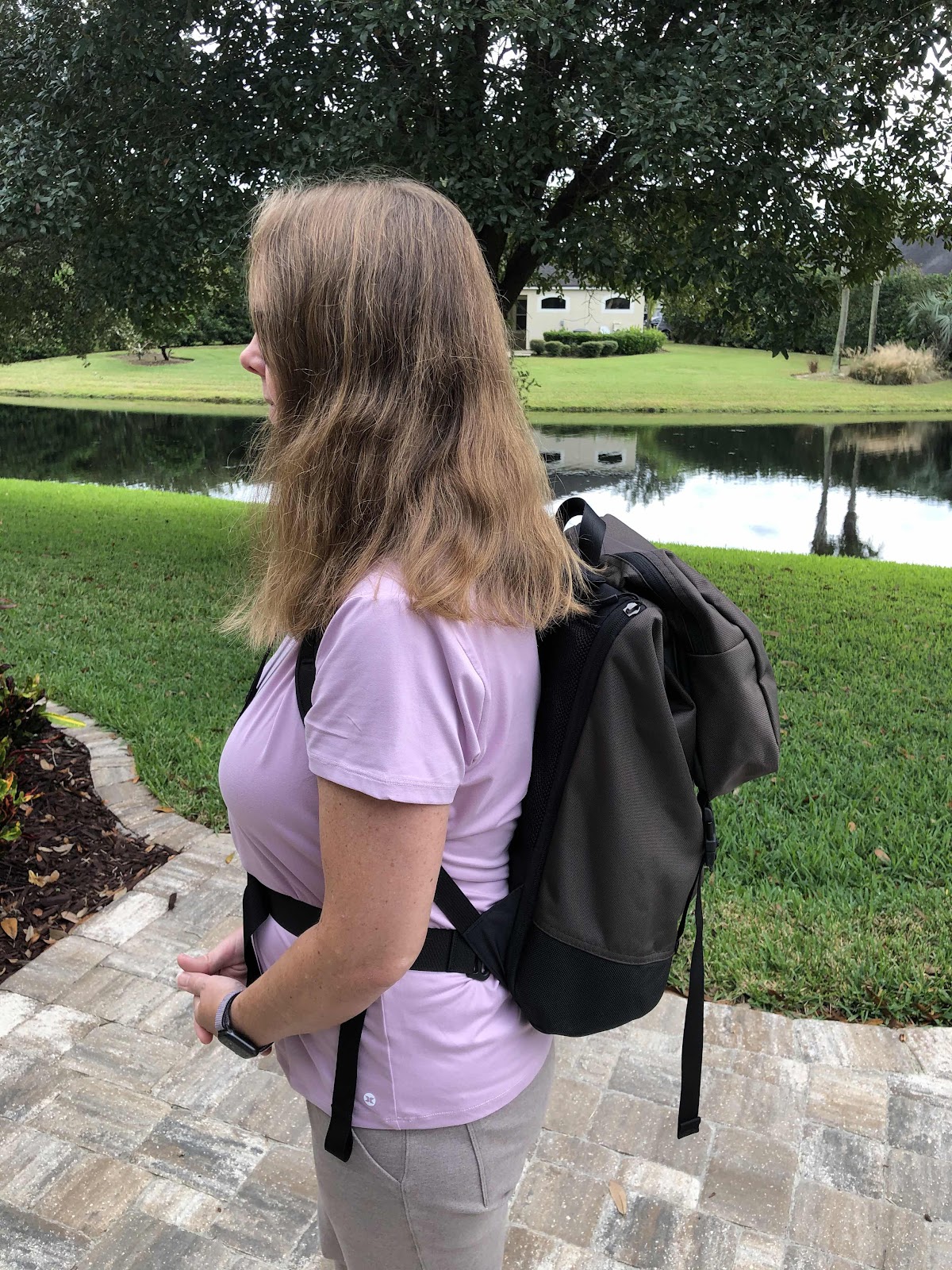
The slimmer profile, the benefit of the frame, and the overall placement of items made this bag feel much more comfortable, and that’s despite not using a more hefty waist belt as I had with the Smart Alec.
In the end, the winner, at least for my work items, is the Shadow Guide 23. I like the cavernous space, the fact that my center of gravity is a bit easier to manage, and the mesh back and frame support. My family commented that it appeared to visually be a better carry bag between the two.
A reader requested I compare the two bags without considering the Smart Alec’s modular pockets. This makes complete sense, given that the bags have a more similar shape and carry capacity in that vein. Here are photos of me wearing the Smart Alec but still keeping the same items packed.

The bag sits a little lower on my back with the Smart Alec. Measuring up from the bottom of the bag to the handle loop, I get 17 inches. When I do the same for the Shadow Guide, I measure 16 inches. The inch impacts it somewhat, but I think the presence of the frame in the Shadow Guide also helps to keep the bag from shifting lower on my torso. By the way, one thing I noted is that the Smart Alec features a lovely Poron handle whereas the Shadow Guide has a simple webbing strap. Given the option, I would choose the Poron.

Here’s a view from the rear. I lost my photographer. He took his sibling out to get a coffee, so I made do with my Apple Watch and propped my phone up on the counter in order to capture these photos. As far as carry comfort went, The Smart Alec definitely improved when I removed the modular pockets. It shifted my center of balance to a more neutral position, similar to the Shadow Guide. The Shadow Guide still edges out its older sibling slightly for comfort, primarily, I suspect, because of the the frame. And of course those newer straps are lovely too.

For reference, this is the laptop I used. It just fit into the laptop sleeve. My current laptop, an HP Spectre, would have zero issues fitting in at all, but I try not to carry it out too much. This laptop serves as my video for my Zoom classes, and it serves its purpose quite nicely. That, and I like still being able to enjoy the stickers I’ve collected on it. My Spectre is still naked. I can’t quite bring myself to put a sticker on it for some reason.
Now let’s take a look at the new Cerylon Ripstop fabric in Cobalt. Here are a few photos to consider:

For your thoughts I’ve gathered my Nordic Halcyon Packing Cube Shoulder Bag, my small Shop Bag in Island, and the new Cerylon Ripstop Packing Cube Shoulder Bag in Cobalt. It’s very difficult to capture the differences in the fabrics. Take a look at the pairings below and see what I mean.

Here is a close up of all three fabrics. The Cerylon is on the right.

Pairing the Cerylon with Island, it appears as if the Cerylon is quite a bit darker. I think that it is true to some extent, but that the white grid of the Island fabric plays mind tricks with us, and it’s really only slightly darker in the end.

When you look at Cerylon next to Nordic, you can see that it now looks much lighter.

And here are three blues: Nordic, Dawn, and Cerylon.
Now for how they carry:
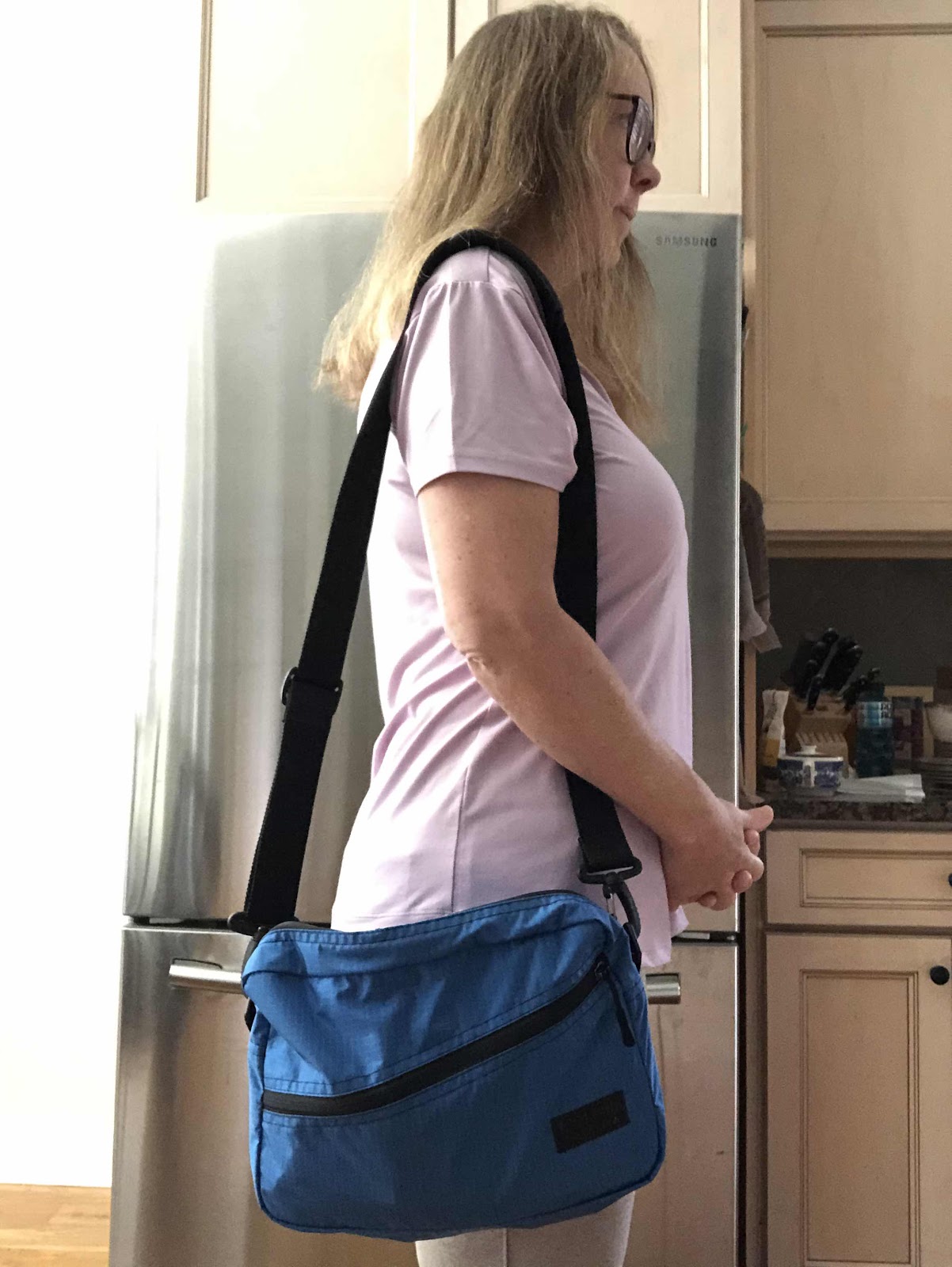
First up is Cerylon. I placed the same items in all three bags and used the strap from my Daylight Briefcase.


Here is the version in Dawn. I do think the attachment points being on the front and rear make the bag less likely to slouch, but then you get into some more difficulties in accessing your items.


And here’s my Nordic one. It is by far the slouchiest of the group. Part of the reason, I believe, is that the bag is old and has been used for many years. Also, there is only one o-ring in the big center (and one in the zipper pocket) versus there being two in the other iterations, so I wasn’t able to hook everything in the same way. Some items hooked into the other bags sat on the floor of the Nordic bag, which may have impacted its carry somewhat.

Here’s what I had inside the bag.

In the small Zip pouch I keep two masks. In the 3D organizer cube there’s a mishmash of inhaler, crackers, hand sanitizer, lip balm, essential oils, medicines, and other small detritus.
Hopefully this blog post has answered some of your questions about the bags. As I carry the Shadow Guide over the upcoming weeks, I’ll continue to consider and write about how it works for me.
